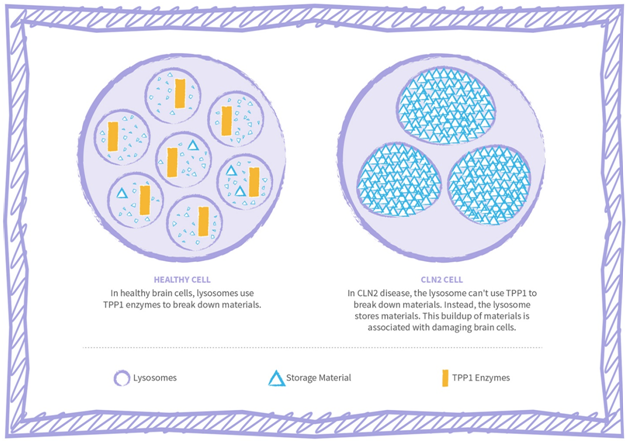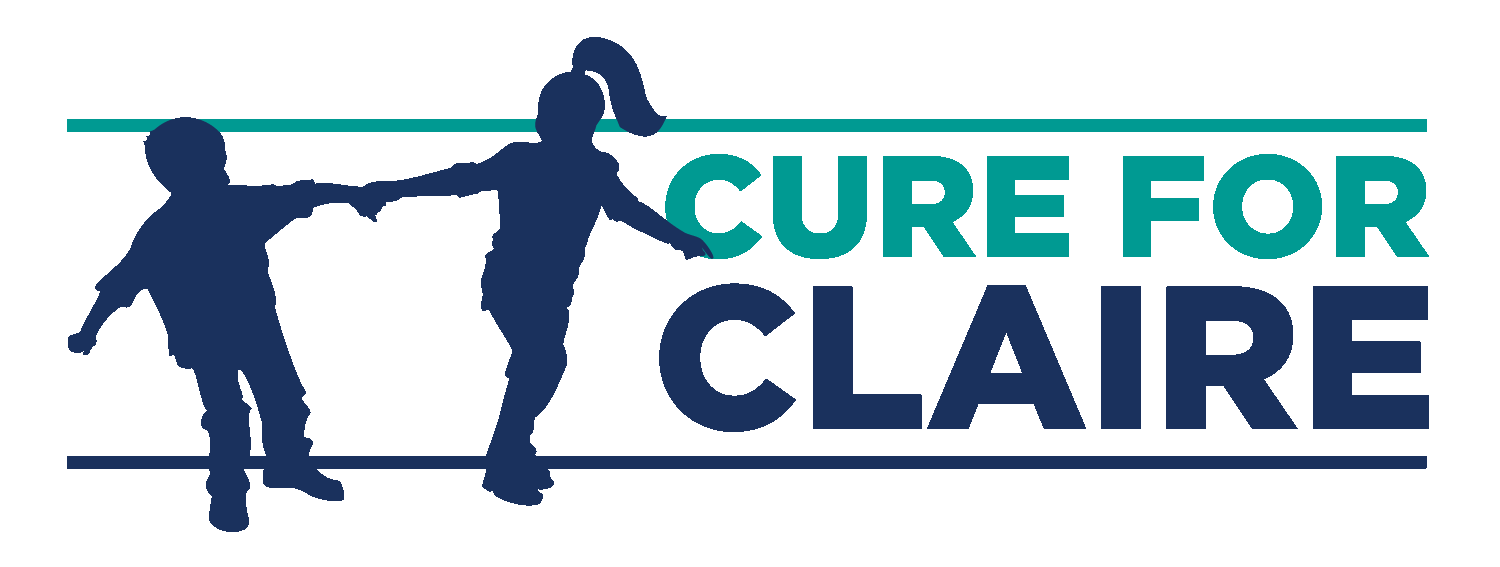What Is CLN2?
CLN2 is an inherited disease that is passed down through families that primarily affects the nervous system. Children with CLN2 are born with this condition, even though the signs and symptoms typically begin between ages 2 and 4.
CLN2 disease is a type of lysosomal storage disorder that affects the cells in the brain. There are lysosomes inside every cell called TPP1, those affected by CLN2 are missing those enzymes. This causes certain materials to build up in the cells, particularly cells in the brain and the eyes. Overtime the symptoms of CLN2 disease start to appear, as the cells stop functioning normally. See diagram below.
The initial features usually include recurrent seizures and difficulty coordinating movements. Affected children also develop muscle twitches and vision loss. CLN2 disease affects motor skills, such as sitting and walking, and speech development. This condition also causes the loss of previously acquired skills, that gradually gets worse, and behavioral problems. Children with this condition often require the use of a wheelchair by late childhood and typically do not survive past their teens.

During the progression of the disease, the affected child can experience a combination of some of the below features.
- Seizures
- Visual impairment/blindness
- Personality and behavior changes
- Ataxia
- Myoclonus
- Dementia
- Cognitive decline
- Psychiatric symptoms (i.e. aggression)
- Extrapyramidal symptoms (i.e. spasms, restlessness, rigidity, tremors, jerky movements)
- Loss of motor skills and the ability to walk, talk and communicate
Currently, most diagnoses of Batten disease are made by genetic testing. The genetic testing process is not offered until many other possible diagnoses are eliminated first. The wait for results is long and can take months before anything can get confirmed. This limbo is extremely stressful and exhausting for families.
Parents need to know their child’s diagnosis and prognosis,no matter how sad the news. Early diagnosis means more time with family and less time searching for an answer. It allows families to connect to the support of other Batten families. Most importantly, early diagnosis may impact eligibility for clinical trails. Clinical trails have very rigid criteria and the less progressed the child is the better the chances that they will have a chance at any possible treatment.
Research
There are several studies seeking to assess the natural history of Batten disease and find ways to treat it. There is also a promise of a one-time gene therapy treatment that would correct the underlying genetic condition and halt the progression of the disease. We are doing everything we can to make sure that our children will be able to participate in this clinical trail, as soon as its been approved by the FDA.
Treatment
There is currently no cure for CLN2. We are lucky that both Claire and Josef receive enzyme replacement therapy every two weeks, along with participating in many therapies, this helps to manage the symptoms of this distressing disease.
Brineura
Every two weeks, both children receive a 4 hour infusion of Bineura. Brinerua is an enzyme replacement therapy that helps slow the progressing of the disease for CLN2 patients. Unfortunately that doesn’t include vision, we can only hope that research will one day change that before its to late.

Therapy
- Physical
- Occupational
- Speech
- Music
- Equine
- Swimming
These are all so important for so many reasons, including maintaining social interactions and giving them joy for as long as they can participate.
For more and UpToDate information regarding CLN2 Battens disease, please visit the BDRSA website. https://bdsra.org/
